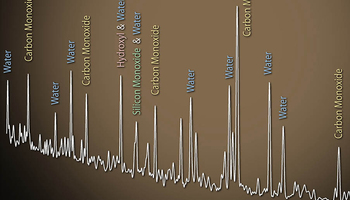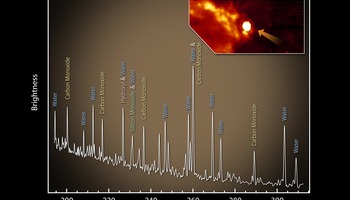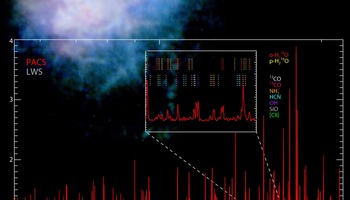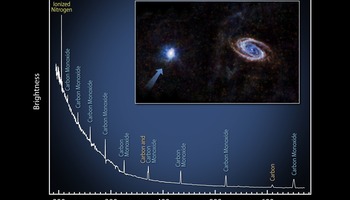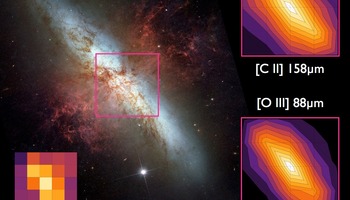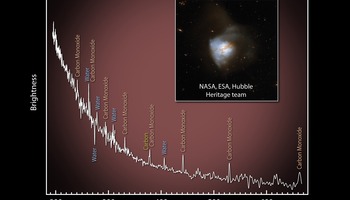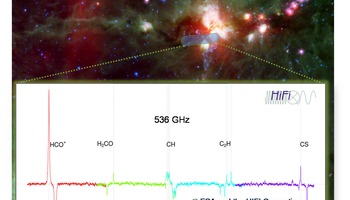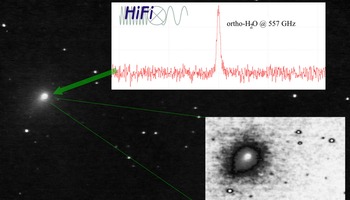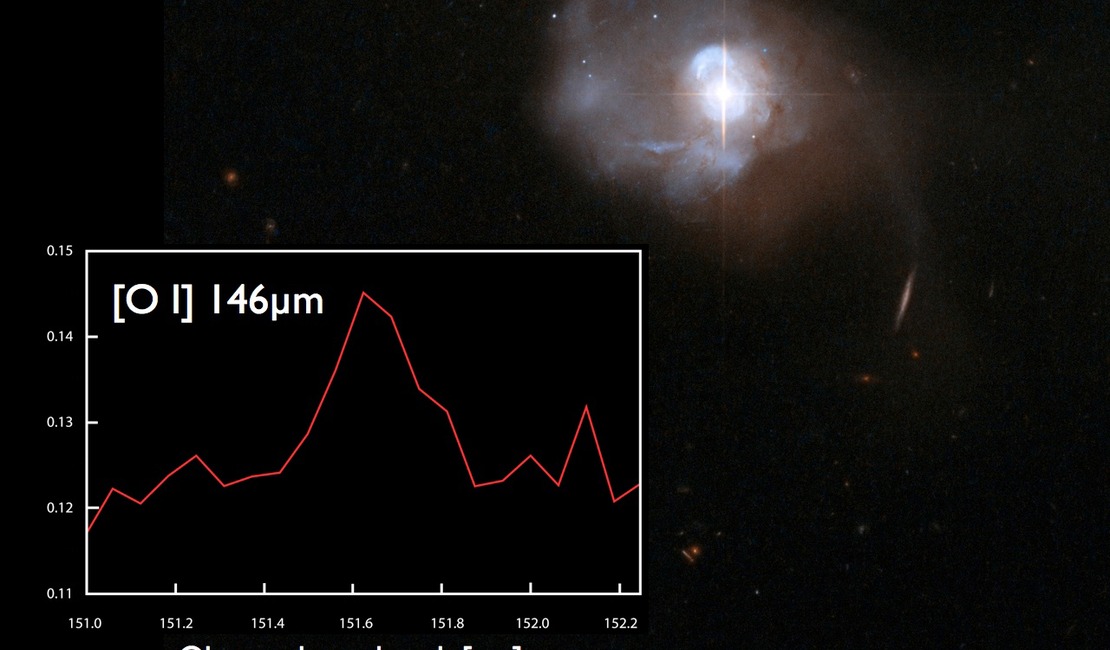
PACS spectrum of the active galaxy Mrk 231
This is one of the early spectra obtained with the PACS integral field spectrometer on Herschel. Shown here is a spectral scan of one of the emission lines detected by PACS in the Ultraluminous Infrared Galaxy (ULIRG) known as Markarian 231.
PACS has detected a weak emission line, never before detected in a ULIRG, originating from neutral oxygen located in the interstellar medium of this galaxy. Its ratio with a stronger line of ionized carbon is a good diagnostic of the power source and the conditions in the interstellar medium of the galaxy.
Previous infrared space missions discovered that collisions and mergers of gas-rich galaxies glow with the luminosity of a quasar. The far-infrared luminosity of these dust-shrouded mergers, known as Ultraluminous Infrared Galaxies (ULIRGs), is caused by extremely energetic starbursts, producing hundreds of new stars every year, as well as by accreting super-massive black holes in their active nuclei.
In addition to immense continuum and strong molecular line emission, starburst galaxies also emit weak far-infrared spectral lines. This line emission from different atoms and ions is a signature from the neutral and ionized interstellar medium in galaxies and is important to diagnose the dust-enshrouded power sources in ULIRGs.
Markarian (Mrk) 231 has long tidal tails and a disturbed shape, a typical signature of colliding galaxies. It is located about 600 million light-years from Earth (in the constellation of Ursa Major).
Image Details
- Date
- November 27, 2009
- ID
- nhsc2009-021f
- Type
- Chart
- Credit
- ESA/NASA/JPL-Caltech
Object Details
- Name
- Markarian 231
- Mrk 231
- Subject | Local Universe
- Galaxy Activity Ultraluminous
- Distance
- Lightyears 600,000,000
- Redshift 0.042170


